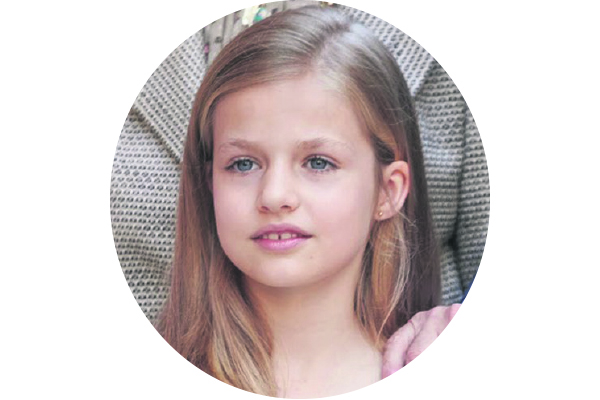
CROWN Princess Leonor of Spain celebrates her 10th birthday and pictures of the first decade of her life have been published in glossy magazines and the media, along with a potted history of what it means to be Europe’s youngest heir to the throne when you’re still at primary school.
Her Royal Highness, Princess of Asturias, Princess of Girona, Princess of Viana, Duchess of Montblanc, Countess of Cervera and Lady of Balaguer, few 10-year-olds on the planet have as many noble titles as young Leonor – but then few are trained literally from the cradle to become a future head of State.
Princess Leonor is described by her teachers and those who know her as a bright spark, lively but attentive, formal and regal beyond her years – and not as naughty or cheeky as her little sister Sofía, who turned eight in May this year.
But aside from the fact HRH Leonor lives in the Zarzuela Palace and her parents are King and Queen of Spain, her life is said to be very similar to that of any other girl of her age.
She studies more languages than most 10-year-olds, and more than her friends at school – as well as English, she is also taught Catalán and Chinese in preparation for her national and international ambassador role that awaits her when she takes the reins from her father.
Leonor already attends some engagements with her parents – she was only four-and-three-quarters when she formed part of the formal ‘welcome home’ for the Spanish football team after they won the FIFA World Cup in 2010, and was pictured wearing a national side shirt in support of ‘the reds’ and being handed the World Cup by goalkeeper Iker Casillas.
The little princess has also attended Armed Forces parades, the ceremony and abdication of her granddad King Juan Carlos I, her own father’s coronation, and the Royal family reception with Pope Benedict XVI.
At every one of these events, she was described as behaving with ‘absolute correctness and formality’ in keeping with her status as heir to the throne, despite her young age.
Leonor will be only the fourth queen in Spain’s history when she is eventually crowned, after Isabel the Catholic of Castilla – whose marriage to Fernando of Aragón united the two Kingdoms and brought Spain together, who were responsible for the bloodthirsty Inquisition and whose daughter Catherine married the British King Henry VIII – Juana la Loca (‘Juana the Madwoman’) and Isabel II.








